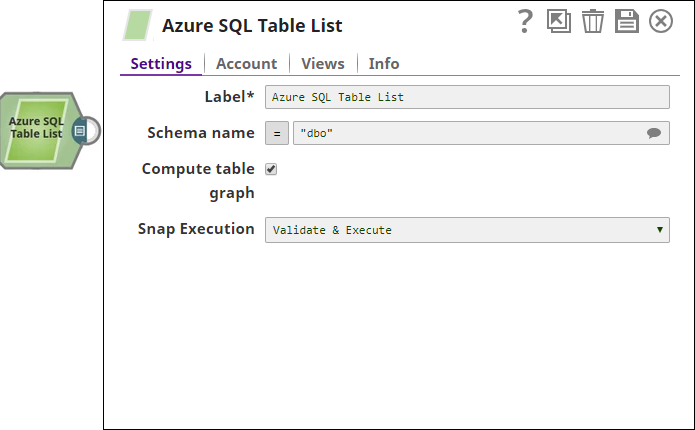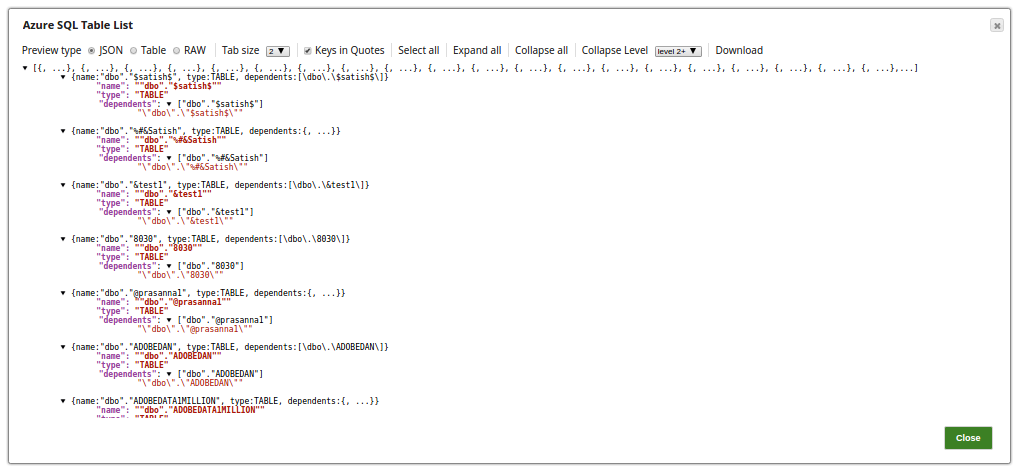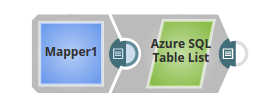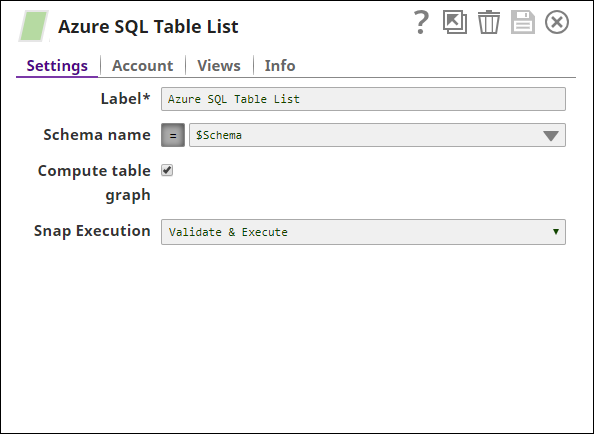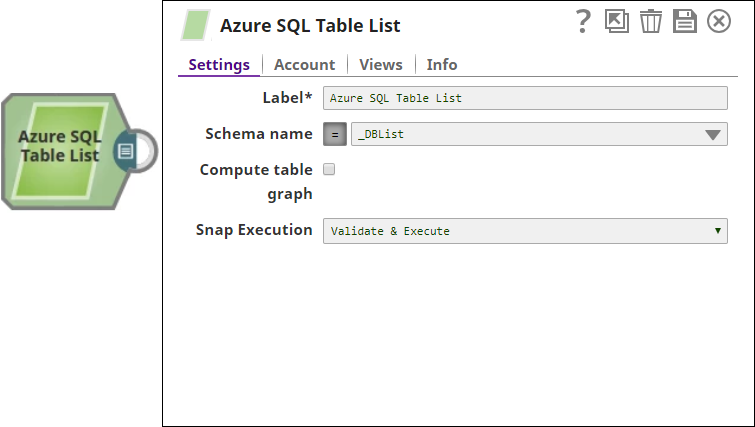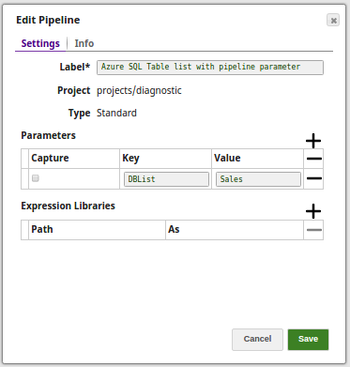On this Page
| Table of Contents | ||||
|---|---|---|---|---|
|
Snap type: | Read | |||||||
|---|---|---|---|---|---|---|---|---|
Description: | This Snap outputs a list of tables in a database. The Snap will connect to the database, read its metadata, and output a document for each table found in the database. The table names are output in a topological order so that tables with the fewest dependencies are output first. In other words, if table A has a foreign key reference to table B, then table B will be output before A. The ordering is intended to ease the process of replicating a group of tables from one database to another. Replicating a Subset of TablesThe output of the Table List Snap can be directly used to replicate an entire database. However, if you are only interested in a subset of tables, you can use a Filter Snap to select the table names you are interested in as well as the tables that they reference. For example, given the following diamond-shaped table graph where A depends on B and C and they both depend on D:
The Table List will output the following documents:
The filter will then remove any extra tables that happen to be in the schema. ETL Transformations & Data FlowThis Snap enables the following ETL operations/flows: Extract data from Azure SQL. This Snap submits a JDBC call to Azure SQL to get the table metadata and writes the results to the output view.
Input & Output
Modes
| |||||||
| Prerequisites: | This Snap supports SQL Server 2008 or newer. | |||||||
Limitations and Known Issues: | None | |||||||
| Configurations: | Account & AccessThis Snap uses account references created on the Accounts page of SnapLogic Manager to handle access to this endpoint. See Azure SQL Account for information on setting up this type of account. Views
| |||||||
| Troubleshooting: | ||||||||
Settings | ||||||||
Label | Required. The name for the Snap. You can modify this to be more specific, especially if you have more than one of the same Snap in your pipeline. | |||||||
Schema Name | The database schema name. Selecting a schema filters the Table name list to show only those tables within the selected schema. The property is suggestible and will retrieve available database schemas during suggest values. Example: test Default value: [None] | |||||||
Compute table graph | Computes the dependents among tables and returns each table with a list of tables it has foreign key references to. The ordering of outputted tables is from least dependent to most-dependent. Note that as turning on this option will significantly slow down the Snap, it should be left as off unless you need it. Default value: Not Selected | |||||||
Basic Use Case
The following pipeline describes how the Snap functions as a standalone Snap in a pipeline:
In the following example, the Table List Snap retrieves all the tables under schema 'dbo' and writes it to the output view. Note the Compute table graph property is selected and hence the output view displays the dependents among the table with foreign key references.
The sample output view data is shown below:
Typical Snap Configurations
The key configurations for the Snap are:
Without Expression: Directly selecting the schema name from the suggestible list:
With Expressions
Query from an upstream Snap: The Mapper Snap passing the required schema name via the upstream.
- Pipeline Parameter: Pipeline parameter set to pass the required schema name to list out all the tables under it.
Downloads
| Attachments | ||
|---|---|---|
|
| Insert excerpt | ||||||
|---|---|---|---|---|---|---|
|
